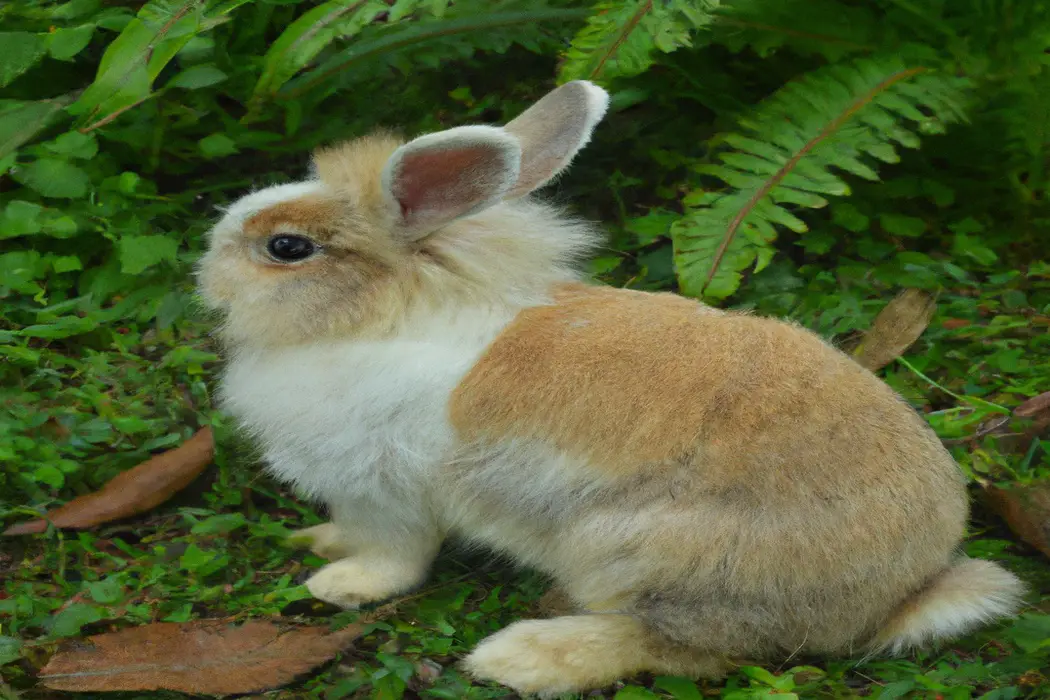Should I Get Two Rabbits From The Same Litter for Companionship?
Key Takeaways:
- Getting two rabbits from the same litter can strengthen their bond and provide companionship.
- It is important to ensure that both rabbits have enough space and resources to thrive in a shared environment.
- Do thorough research about their breed and temperament before making a decision.
- Consider the long-term commitment of caring for two rabbits, including potential health issues and financial expenses.
Are you considering getting two adorable rabbits to bring home?
It’s hard to resist those fluffy little bundles of joy.
But before you make your decision, let’s explore an important question: should you get two rabbits from the same litter?
While it may seem like a great idea at first, there are potential challenges to consider.
From territorial issues to health concerns and bonding difficulties, there’s more to it than meets the eye.
But fear not! In this article, we’ll discuss these challenges and provide some helpful tips for successfully keeping rabbits from the same litter together.
Plus, we’ll explore alternatives if you decide to go a different route.
Let’s dive in and find out what’s best for you and your furry friends!
| Pros | Cons | |
| Companionship | Mutual companionship and socialization | Possible fights or conflicts |
| Less Stressful Transition | Easier adaptation to a new environment | Possible difficulty in establishing territory |
| Reduced Boredom and Loneliness | More playtime and interaction | Possible competition for attention |
| Lower Cost and Effort | Potential sharing of supplies and resources | Possible increased expenses for larger enclosure or separate space |
| Health Benefits | Disease prevention through grooming and social interaction | Possible transmission of diseases or parasites |
Potential challenges of getting rabbits from the same litter
Getting rabbits from the same litter can present challenges in terms of territorial issues, health concerns, and bonding difficulties.
Territorial issues
Territorial issues can arise when getting two rabbits from the same litter. Rabbits are naturally territorial animals and may become possessive over their space, food, and toys.
They may show aggression towards each other, leading to fights and potential injuries.
It is important to carefully introduce the rabbits to each other and provide separate living spaces to avoid territorial disputes. Monitoring their behavior and providing ample resources can help alleviate these issues.

Health concerns
Health concerns:
- Inbreeding: Getting rabbits from the same litter may increase the risk of genetic health issues as they share a close lineage.
- Weakened immune system: When rabbits are bred closely together, their immune systems may not develop properly, leading to higher susceptibility to diseases.
- Developmental issues: Rabbits from the same litter may experience stunted growth and other developmental problems due to limited space and resources in the womb.
- Increased risk of infectious diseases: If one rabbit from the litter becomes ill, there is a higher likelihood of transmitting the disease to its littermates.
- Behavioral problems: Rabbits that have grown up together may develop aggressive or territorial behaviors, leading to potential conflict and injury. Proper socialization and monitoring can help mitigate these issues.
Bonding difficulties
Bonding two rabbits from the same litter may seem like an easy task, but it can come with its fair share of difficulties. Rabbits have strong territorial instincts and may struggle to accept a new companion, even if they’re siblings.
Bonding can take time and patience, as rabbits establish a hierarchy and learn to trust each other.
Behaviors like chasing, nipping, and humping can occur during the bonding process. Encouraging neutral territory and supervised introductions can help overcome these challenges.
Tips for successfully keeping rabbits from the same litter together
Provide enough space for each rabbit. Introduce the rabbits gradually and monitor their behavior closely.
Spay/neuter your rabbits to reduce aggression and the risk of breeding.
Provide enough space
When keeping rabbits from the same litter together, it is important to provide them with enough space.
Rabbits need room to move around and exercise to maintain their physical and mental well-being.
A spacious enclosure or hutch that allows for hopping, running, and exploring is essential.
Make sure the space is large enough to accommodate both rabbits comfortably without overcrowding.
Providing enough space will help prevent stress and aggression between the littermates, promoting a harmonious living environment for them.
Introduce rabbits gradually
When introducing rabbits to each other, it’s important to take things slowly and gradually. Start by keeping them in separate enclosures within close proximity, so they can get used to each other’s presence.
Swap their bedding and toys to help them become familiar with each other’s scent.
Over time, you can allow supervised interactions in a neutral area, gradually increasing the duration. Be patient and observe their behavior carefully to ensure a smooth and successful introduction.
Monitor their behavior
When you have two rabbits from the same litter, it’s important to closely monitor their behavior.
Keep an eye out for any signs of aggression or dominance between them.
Watch for excessive chasing, biting, or fighting.
It’s normal for rabbits to establish a hierarchy, but make sure it doesn’t become too aggressive.
Monitor their eating habits as well to ensure they both have ample access to food.
Regularly observe their interactions and intervene if necessary to maintain a peaceful coexistence.

Spay/neuter your rabbits
Spaying or neutering your rabbits is important.
It can help prevent unwanted litters and reduce the risk of certain health issues.
It is a simple procedure that is done by a veterinarian.
Male rabbits, or bucks, are neutered, while female rabbits, or does, are spayed.
Spaying or neutering can also help with behavioral problems and make your rabbits more social and easier to handle.
It is best to have this done when they are young, around four to six months old.
Just make sure to follow the aftercare instructions provided by your vet.

Alternatives to getting rabbits from the same litter
If you’re considering getting rabbits, there are alternative options to getting them from the same litter, such as adopting already bonded rabbits or bonding rabbits from different litters.
Adopting bonded rabbits
If you’re considering adopting rabbits, it’s a great idea to choose bonded pairs. Bonded rabbits have already formed a strong companionship and will keep each other entertained and happy.
Plus, you won’t have to worry about them feeling lonely when you’re not around.
When adopting bonded rabbits, be sure to ask the shelter or rescue organization about their relationship and spend some time observing their interactions to ensure they’re truly bonded. Bonded rabbits make wonderful pets and will bring double the joy to your home!
Bonding rabbits from different litters
Bonding rabbits from different litters is possible, but it can be more challenging than bonding rabbits from the same litter. Rabbits have a strong social hierarchy, and introducing rabbits from different litters can lead to territorial behavior.
Here are a few tips to help with the bonding process:
- Neutral territory: Start the bonding process in a neutral space to reduce territorial aggression.
- Slow introductions: Gradually introduce the rabbits to each other, starting with short supervised sessions and gradually increasing the time.
- Scent swapping: Rub each rabbit with a towel or blanket, then swap the items between them to help them get used to each other’s scent.
- Patience and supervision: Bonding rabbits can take time, so be patient and closely supervise their interactions to prevent any fights.
Remember, every rabbit is different, so the bonding process may vary. Seeking advice from a rabbit behavior expert can also be helpful.
Frequently Asked Questions
Can rabbits from the same litter fight?
Rabbits from the same litter can definitely fight. Just like human siblings, they may have conflicts and disagreements.
It’s not uncommon for rabbits to establish dominance or territory within their social hierarchy, and this can lead to fights.
This is why it’s important to provide them with enough space, resources, and attention to minimize potential conflicts. It’s always a good idea to monitor their behavior and intervene if necessary to ensure the safety and well-being of your rabbits.
Do rabbits from the same litter have a stronger bond?
Yes, rabbits from the same litter usually have a stronger bond.
Growing up together, they form a close relationship and tend to rely on each other for companionship and comfort.
This is because they have shared experiences, and their early socialization helps create a strong bond between them.
They understand each other’s behaviors and communicate more effectively.
It’s important to note that individual personalities can still play a role in how strong the bond is, but generally, littermates have a special connection.
Final Verdict
While there may be potential challenges in getting rabbits from the same litter, with the right approach, it is possible to successfully keep them together. Providing enough space, introducing them gradually, monitoring their behavior, and spaying/neutering are important steps to ensure a harmonious coexistence.
However, it’s worth considering alternatives such as adopting already bonded rabbits or bonding rabbits from different litters if you want to avoid potential issues.
Remember, every rabbit is unique, and it’s essential to prioritize their well-being and happiness above all else.







